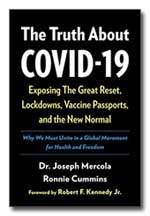 There are many preservatives – some quite natural and others … not. The three most commonly used preservatives in the United States are BHT, BHA, and TBHQ. They are petrochemicals (made from petroleum), and not allowed in some countries. Although they are frequently called antioxidants, they only prevent oxidation in the food item itself. Once you eat it, and it goes through your liver, it becomes a pro-oxidant.
There are many preservatives – some quite natural and others … not. The three most commonly used preservatives in the United States are BHT, BHA, and TBHQ. They are petrochemicals (made from petroleum), and not allowed in some countries. Although they are frequently called antioxidants, they only prevent oxidation in the food item itself. Once you eat it, and it goes through your liver, it becomes a pro-oxidant.
BHA
According to the National Toxicology Program’s Twelfth Annual Report on Carcinogens (2011) BHA “is reasonably anticipated to be a human carcinogen…”
BHT
According to the Toxicology Data Network, BHT is absorbed and stored in fat tissue. In animal studies, its suitability for use as a food additive is questioned because of “increased liver weights & abnormal cellular behavior.” It is known by many names — see a list here.
TBHQ
According to the Toxicology Data Network, TBHQ human health effects include chronic neurotoxic effects and vision disturbances, as well as proliferation of certain lymphocytes. In animal studies, TBHQ induced convulsions, liver enlargement, and increase in cytochrome P450.




















